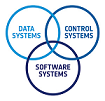Speaker
Description
The use of electric propulsion for orbit raising is a key factor for reducing the cost of access to space, for telecommunication satellites going to geostationary orbit (E172B, SES14, SES12) as well as for LEO satellites climbing to their operational altitude. The increased time-to-orbit is however a downside, with additional operation costs from ground station usage and personnel. Moreover, when envisaging large LEO constellations, the number of satellites that must be simultaneously operated might result in operation bottlenecks.
Increasing autonomy is therefore an important objective for reducing EOR costs, and the anticipated generalization of on-board GNSS receivers is a key element towards that goal. We present the results of a 2-year R&D study (ARTES funding) which looked into guidance strategies that would make autonomous EOR possible while being compatible with on-board CPU limitations.
The study investigated two major classes of solutions:
- semi-autonomous solutions are an extension of what Airbus is currently implementing for telecom missions with EOR: the use of on-board navigation data and smart compression allows to extend the validity of the ground-optimized guidance profile from a few weeks to a few months, thus reducing ground intervention by 80% with only minor changes to the current architecture.
- fully autonomous solutions represent a significant step further, where the on-board system can autonomously compute an optimum guidance scenario (thrust profile and complete 3-axis attitude trajectory), based on the latest GNSS data, thus limiting ground intervention to health-checks and collision-risk monitoring. It is this latter class of solutions which we present here.
After comparing several alternatives for the fully autonomous guidance approach, a best candidate solution was selected and implemented in detail. Functional simulations over a complete transfer showed that despite the disturbances and uncertainties, the performance in terms of optimality was remarkable (propellant expenditure was within 1% of the optimum, as computed by Airbus's OptElec tool).
The guidance software prototype then went through the same formal code-generation process as for real on-board software developments, and tested on a LEON3 processor. Preliminary results from the Processor-In-the-Loop test campaign show that the peak combined CPU load for the 2 asynchronous tasks plus the cyclic task amounts to less than 1%: this demonstrates that the fully autonomous guidance algorithms can indeed be implemented on board.

